Optimisation of Clutch Disc Friction Material Using a Multi-Layer Perceptron Artificial Neural Network
Abstract
1. Introduction
2. Materials and Methods
2.1. Materials
2.2. Tribological Tests
2.3. Artificial Neural Network Analysis
3. Results and Discussion
3.1. Chemical Characterisation
3.2. Tribological Characterisation
- -
- c represents the specific heat of the composite material;
- -
- mi represents the mass in the chemical compound of the composite expressed in [wt%];
- -
- ci represents the specific heat of the chemical compound expressed in [J/kg·K].
3.3. Morphological Characterisation
3.4. Artificial Neural Network Development
4. Conclusions
- -
- The use of SEM and EDX techniques revealed significant differences in the chemical compositions of the friction materials. These compositional variations had a direct effect on the performance of the discs, particularly in terms of their coefficient of friction and thermal behaviour during operation. This underscores the critical role of material composition in determining tribological performance.
- -
- Precise measurements of the coefficient of friction between the clutch disc friction materials and the cast iron disc were made. These measurements highlighted the variability in performance of the different materials and provided essential data for the development of the neural network model.
- -
- The data obtained from the experimental measurements were used to construct a neural network model with three hidden layers. This model showed a strong correlation between the input variables (chemical composition) and the output variables (coefficient of friction and temperature). The ability of the model to capture the complex relationships between composition and performance validates its effectiveness as a material optimisation tool.
- -
- The predictive accuracy of the neural network enabled the optimisation of friction material compositions. By minimising discrepancies in friction coefficients and surface temperatures, the model provided insights into achieving an improved and consistent material performance. The model’s “query” capability facilitated this optimisation process.
- -
- The sensitivity analysis revealed a significant consistency between the six most influential constituents and their effect on the friction coefficient and temperature generation. This finding confirms that even small variations in chemical composition can significantly affect the tribological performance of clutch disc materials.
- -
- This study confirmed the importance of optimising material composition to improve tribological performance. The demonstrated relationship between chemical composition and performance provides a basis for the development of advanced friction materials with improved wear resistance and thermal stability.
Author Contributions
Funding
Institutional Review Board Statement
Data Availability Statement
Conflicts of Interest
References
- Della Gatta, A.; Iannelli, L.; Pisaturo, M.; Senatore, A.; Vasca, F. A Survey on Modeling and Engagement Control for Automotive Dry Clutch. Mechatronics 2018, 55, 63–75. [Google Scholar] [CrossRef]
- Chennai Viswanathan, P.; Banerjee, A.; Sridharan, N.V.; Chakrapani, G.; Vaithiyanathan, S. Advancing Automobile Dry Clutch Fault Diagnosis through Innovative Imaging Techniques and Vision Transformer Integration. Meas. J. Int. Meas. Confed. 2025, 242, 115975. [Google Scholar] [CrossRef]
- Jabbar, N.A.; Hussain, I.Y.; Abdullah, O.I.; Mohammed, M.N. An Experimental Investigation and Numerical Analysis of the Thermal Behavior of a Clutch System Using the Frictional Facing of Functionally Graded Materials. Designs 2023, 7, 125. [Google Scholar] [CrossRef]
- Hjelm, R.; Wahlström, J.; Yenibayrak, I.; Sabani, D.; Runsten, P.; Lyu, Y. Airborne Wear Particles from Dry Clutches. Atmosphere 2022, 13, 1700. [Google Scholar] [CrossRef]
- Dolcini, P.J.; Canudas de Wit, C.; Béchart, H. Dry Clutch Control for Automotive Applications. In Advances in Industrial Control; Springer: London, UK, 2010; Volume 16, ISBN 978-1-84996-067-0. [Google Scholar]
- Jabbar, N.A.; Hussian, I.Y.; Abdullah, O.I. Numerical Simulation of Dry Friction Clutch Thermal Behavior with Different Friction Materials. AIP Conf. Proc. 2023, 2651, 0105422. [Google Scholar] [CrossRef]
- Majeed, M.H.; Kadhim, D.E.; Abdullah, O.I.; Schlattmann, J. Numerical Analysis of Thermal Problem in Dry Friction Clutches Based on the Interactive Design Approach. Int. J. Interact. Des. Manuf. 2020, 14, 1091–1101. [Google Scholar] [CrossRef]
- Senatore, A.; D’Agostino, V.; Giuda, R.; Petrone, V. Experimental Investigation and Neural Network Prediction of Brakes and Clutch Material Frictional Behaviour Considering the Sliding Acceleration Influence. Tribol. Int. 2011, 44, 1199–1207. [Google Scholar] [CrossRef]
- Al-zubaidi, S.S.; Abdullah, O.I. Investigation of thermal influence on the frictional. J. Balk. Tribol. Assoc. 2020, 26, 14–29. [Google Scholar]
- Khurmi, R.S.; Gupta, J.K. Theory of Machines; S. Chand & Co., Ltd.: New Dehli, India, 2005; ISBN 9788121925242. [Google Scholar]
- Harish, K.; Kumar, Y.D. Optimization of Friction Clutch for Various Friction Materials. Int. J. Res. 2017, 04, 3493–3498. [Google Scholar]
- Yu, L.; Ma, B.; Chen, M.; Li, H.; Ma, C.; Liu, J. Comparison of the Friction and Wear Characteristics between Copper and Paper Based Friction Materials. Materials 2019, 12, 2988. [Google Scholar] [CrossRef]
- Zhang, X.; Li, K.Z.; Li, H.J.; Fu, Y.W.; Fei, J. Tribological and Mechanical Properties of Glass Fiber Reinforced Paper-Based Composite Friction Material. Tribol. Int. 2014, 69, 156–167. [Google Scholar] [CrossRef]
- Wu, B.; Qin, D.; Hu, J.; Wang, X.; Wang, Y.; Lv, H. Analysis of Influencing Factors and Changing Laws on Friction Behavior of Wet Clutch. Tribol. Int. 2021, 162, 107125. [Google Scholar] [CrossRef]
- Poser, K.; Gahr, K.H.Z.; Schneider, J. Development of Al2O3 Based Ceramics for Dry Friction Systems. Wear 2005, 259, 529–538. [Google Scholar] [CrossRef]
- Wu, B. Friction Coefficient of Wet Clutches as a Function of Service Mileage. Lubricants 2024, 12, 147. [Google Scholar] [CrossRef]
- Li, M.; Khonsari, M.M.; McCarthy, D.M.C.; Lundin, J. Parametric Analysis for a Paper-Based Wet Clutch with Groove Consideration. Tribol. Int. 2014, 80, 222–233. [Google Scholar] [CrossRef]
- Biczó, R.; Kalácska, G.; Mankovits, T. Effects of Automotive Test Parameters on Dry Friction Fiber-Reinforced Clutch Facing Surface Microgeometry and Wear. Polymers 2021, 13, 3896. [Google Scholar] [CrossRef]
- Wongpayakyotin, A.; Jubsilp, C.; Tiptipakorn, S.; Mora, P.; Bielawski, C.W.; Rimdusit, S. Effects of Alkyl-Substituted Polybenzoxazines on Tribological Properties of Non-Asbestos Composite Friction Materials. Polymers 2021, 13, 567. [Google Scholar] [CrossRef] [PubMed]
- Bijwe, J. Composites as Friction Materials: Recent Developments in Non-asbestos Fiber Reinforced Friction Materials—A Review. Polym. Compos. 1997, 18, 378–396. [Google Scholar] [CrossRef]
- Kumar, M.; Bijwe, J. Non-Asbestos Organic (NAO) Friction Composites: Role of Copper; Its Shape and Amount. Wear 2011, 270, 269–280. [Google Scholar] [CrossRef]
- Kubiak, K.J.; Mathia, T.G.; Fouvry, S. Interface Roughness Effect on Friction Map under Fretting Contact Conditions. Tribol. Int. 2010, 43, 1500–1507. [Google Scholar] [CrossRef]
- Fernandes, G.; Zanotto, P.; Sinatora, A. The Role of Counter-Face Roughness on the Tribological Performance of a Clutch System Tested with a Pin-on-Disc Tribometer. Lubricants 2016, 4, 18. [Google Scholar] [CrossRef]
- Gurney, K. An Introduction to Neural Networks; CRC Press: Boca Raton, FL, USA, 2014; ISBN 0203451511. [Google Scholar]
- Vega-Carrillo, H.R.; Hernandez-Davila, V.M.; Manzanares-Acuna, E.; Gallego, E.; Lorente, A.; Iniguez, M.P. Artificial Neural Networks Technology. Radiat. Prot. Dosim. 2007, 126, 408–412. [Google Scholar] [CrossRef]
- Hui, C.-L. Artificial Neural Networks—Aplications; IntechOpen: London, UK, 2011; ISBN 978-953-307-188-6. [Google Scholar]
- Hangan Martin, T.; Demuth Howard, B. Beale Mark Neural Network Design; PWS Publishing Company: Beijing, China, 2002; ISBN 7-111-10841-8. [Google Scholar]
- Chan, D.; Stachowiak, G.W. Review of Automotive Brake Friction Materials. Proc. Inst. Mech. Eng. Part D J. Automob. Eng. 2004, 218, 953–966. [Google Scholar] [CrossRef]
- Öztürk, B.; Ztürk, S.Ö.; Adigüzel, A.A. Effect of Type and Relative Amount of Solid Lubricants and Abrasives on the Tribological Properties of Brake Friction Materials. Tribol. Trans. 2013, 56, 428–441. [Google Scholar] [CrossRef]
- Kumar, K.N.; Suman, K.N. Review of Brake Friction Materials for Future Development. J. Mech. Mech. Eng. 2017, 3, 1–29. [Google Scholar]
- Lawal, S.S.; Ademoh, N.A.; Bala, K.C.; Abdulrahman, A.S. A Review of the Compositions, Processing, Materials and Properties of Brake Pad Production. J. Phys. Conf. Ser. 2019, 1378, 032103. [Google Scholar] [CrossRef]
- Xiao, G.; Zhu, Z. Friction Materials Development by Using DOE/RSM and Artificial Neural Network. Tribol. Int. 2010, 43, 218–227. [Google Scholar] [CrossRef]
- Jadhav, S.P.; Sawant, S.H. A Review Paper: Development of Novel Friction Material for Vehicle Brake Pad Application to Minimize Environmental and Health Issues. Mater. Today Proc. 2019, 19, 209–212. [Google Scholar] [CrossRef]
- Wahlström, J.; Gventsadze, D.; Olander, L.; Kutelia, E.; Gventsadze, L.; Tsurtsumia, O.; Olofsson, U. A Pin-on-Disc Investigation of Novel Nanoporous Composite-Based and Conventional Brake Pad Materials Focussing on Airborne Wear Particles. Tribol. Int. 2011, 44, 1838–1843. [Google Scholar] [CrossRef]
- Eriksson, M.; Jacobson, S. Tribological Surfaces of Organic Brake Pads. Tribol. Int. 2000, 33, 817–827. [Google Scholar] [CrossRef]
- Eriksson, M.; Bergman, F.; Jacobson, S. On the Nature of Tribological Contact in Automotive Brakes. Wear 2002, 252, 26–36. [Google Scholar] [CrossRef]
- Eriksson, M.; Bergman, F.; Jacobson, S. Surface Characterisation of Brake Pads after Running under Silent and Squealing Conditions. Wear 1999, 232, 163–167. [Google Scholar] [CrossRef]
- Eriksson, M.; Lord, J.; Jacobson, S. Wear and Contact Conditions of Brake Pads: Dynamical in Situ Studies of Pads on Glass. Wear 2001, 249, 272–278. [Google Scholar] [CrossRef]
- Nasir, T.; Yousif, B.F.; McWilliam, S.; Salih, N.D.; Hui, L.T. An Artificial Neural Network for Prediction of the Friction Coefficient of Multi-Layer Polymeric Composites in Three Different Orientations. Proc. Inst. Mech. Eng. Part C J. Mech. Eng. Sci. 2010, 224, 419–429. [Google Scholar] [CrossRef]
- Zhang, G.P. Neural Networks for Classification: A Survey. IEEE Trans. Syst. Man Cybern. Part C Appl. Rev. 2000, 30, 451–462. [Google Scholar] [CrossRef]
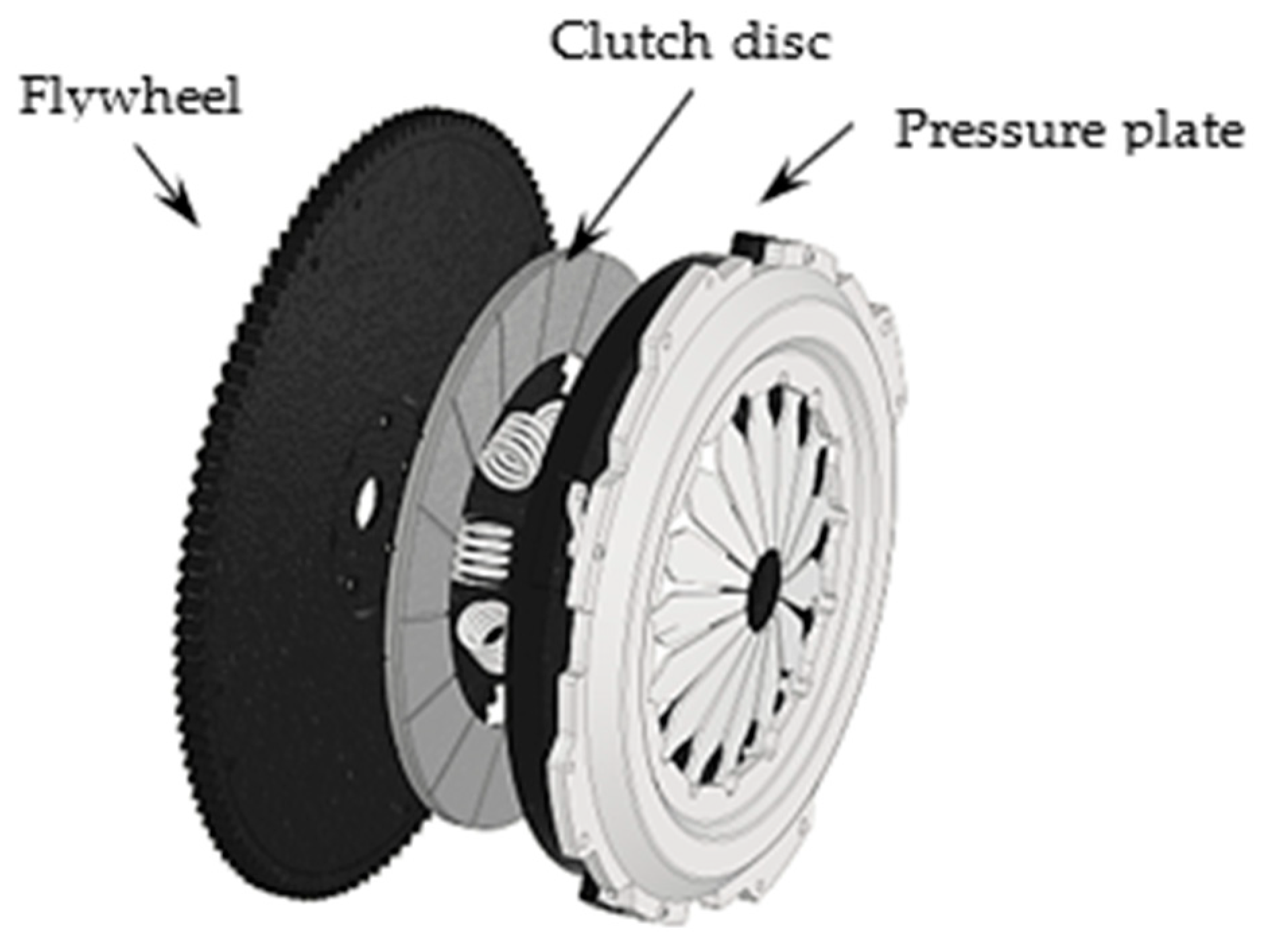
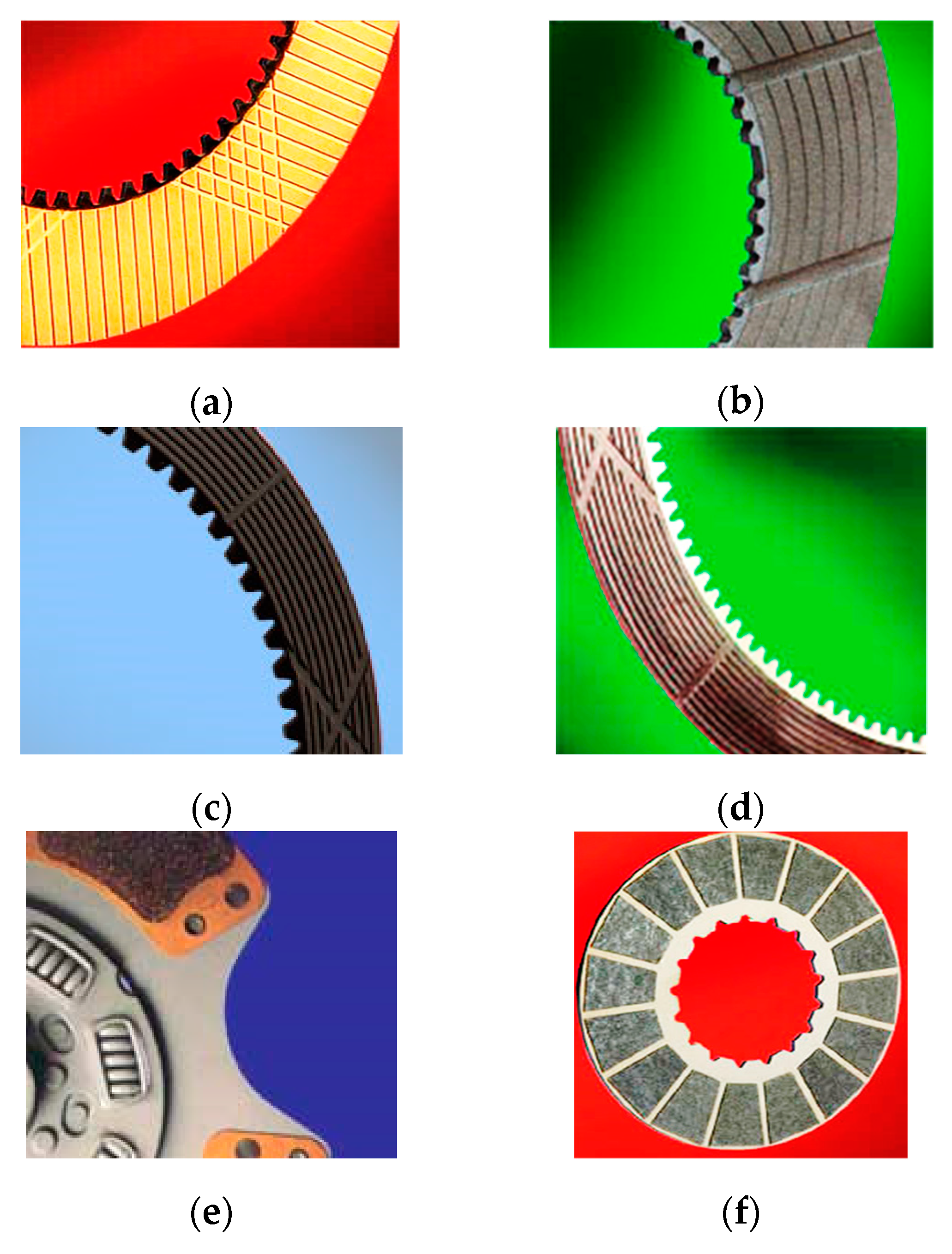
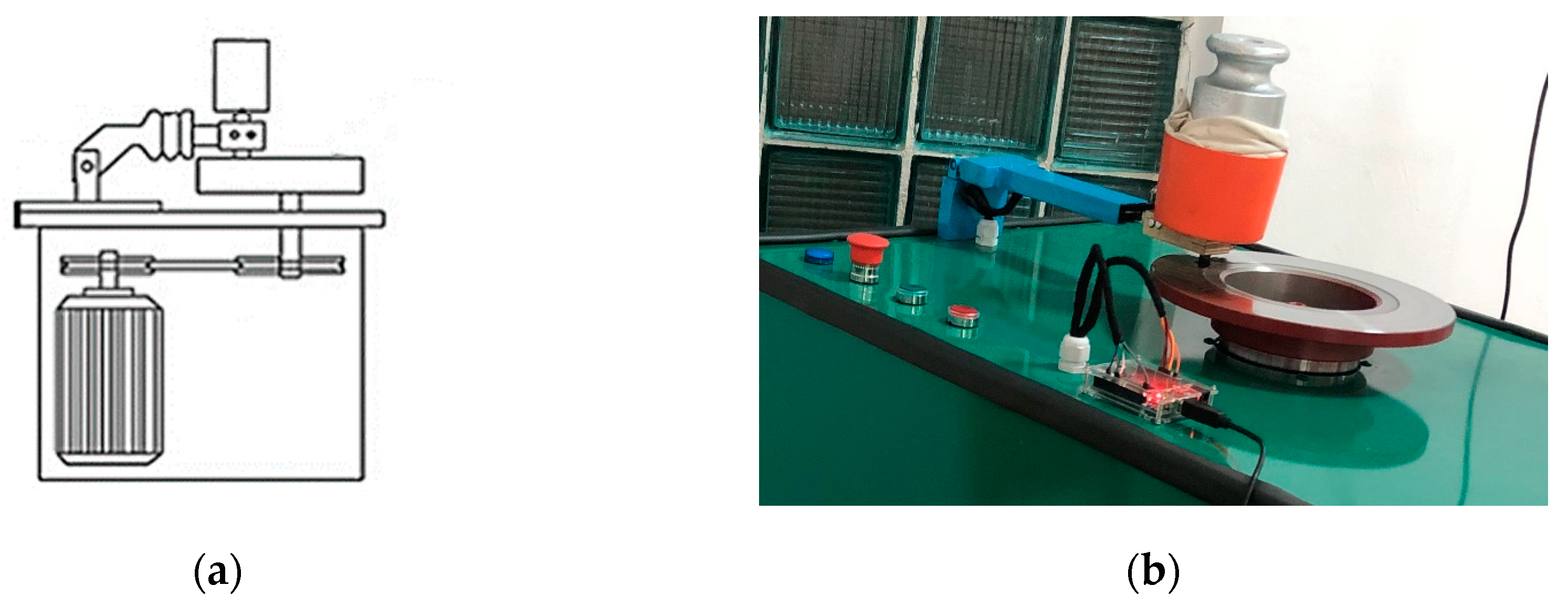



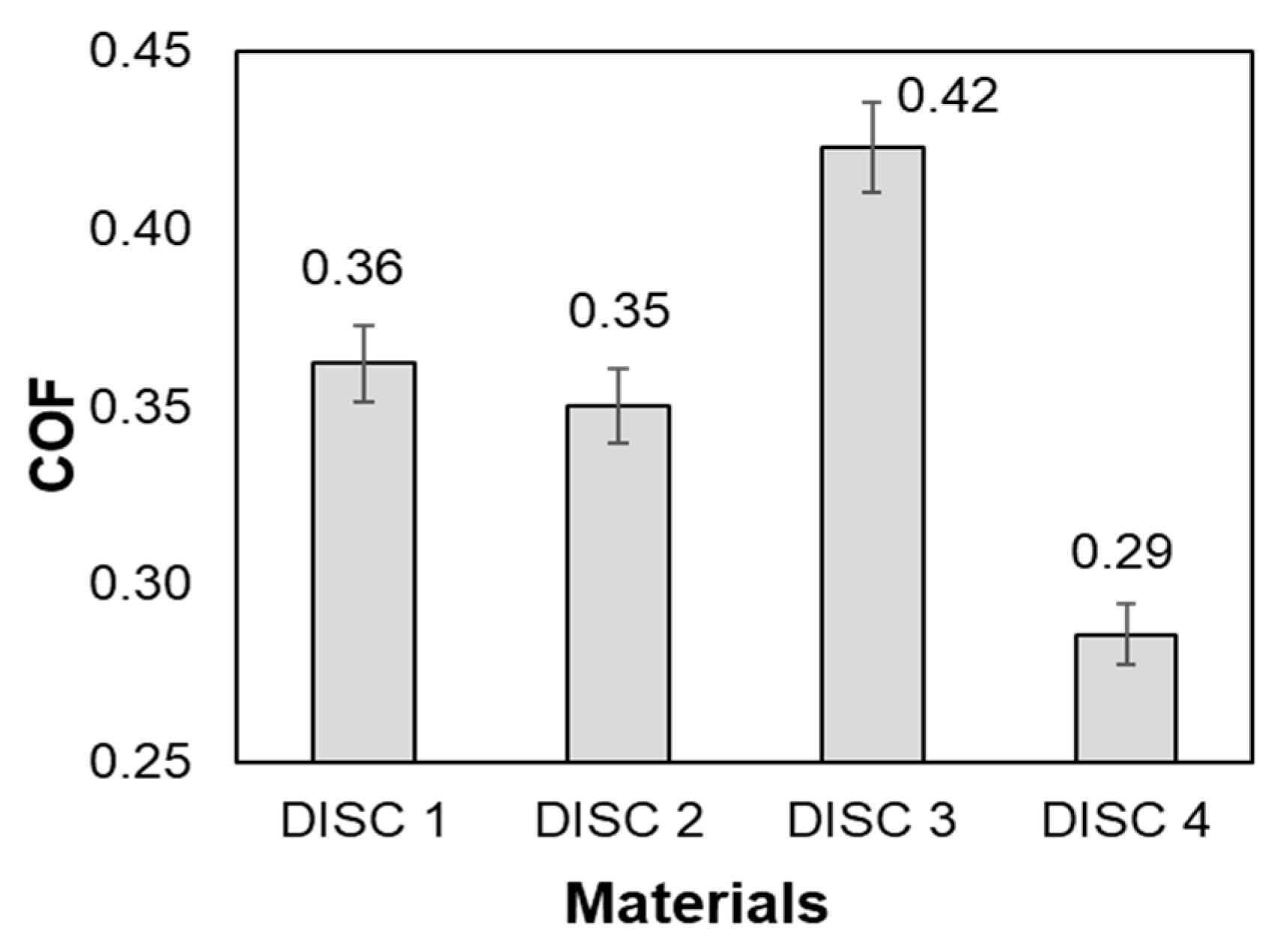
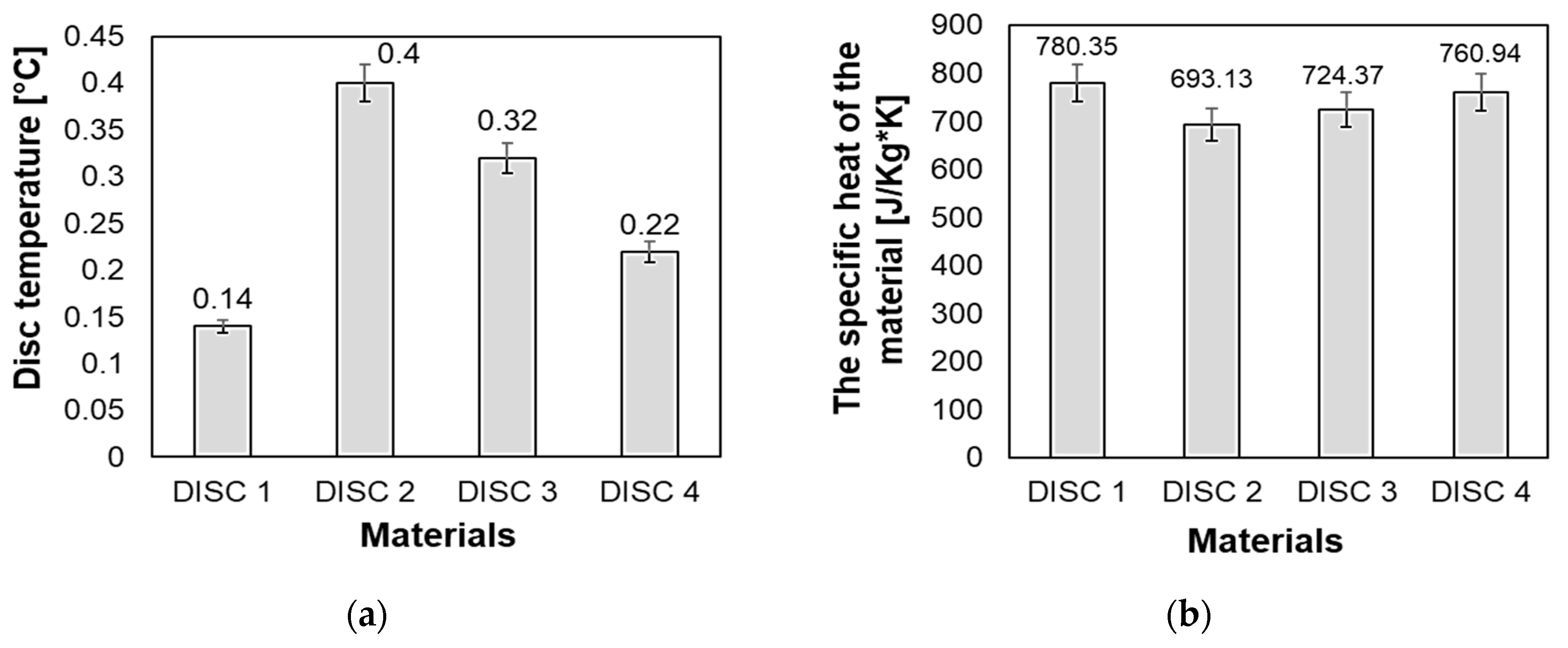
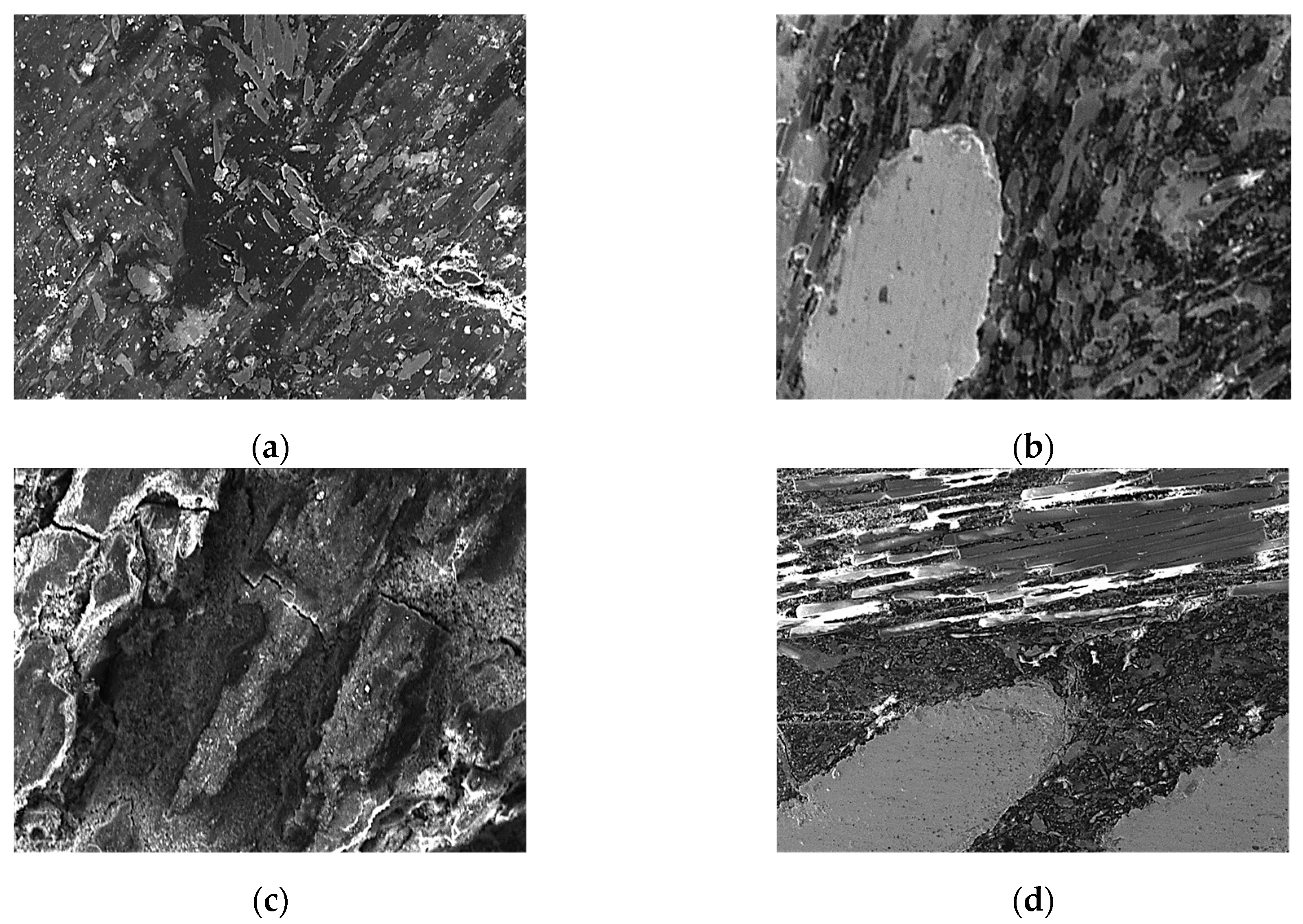
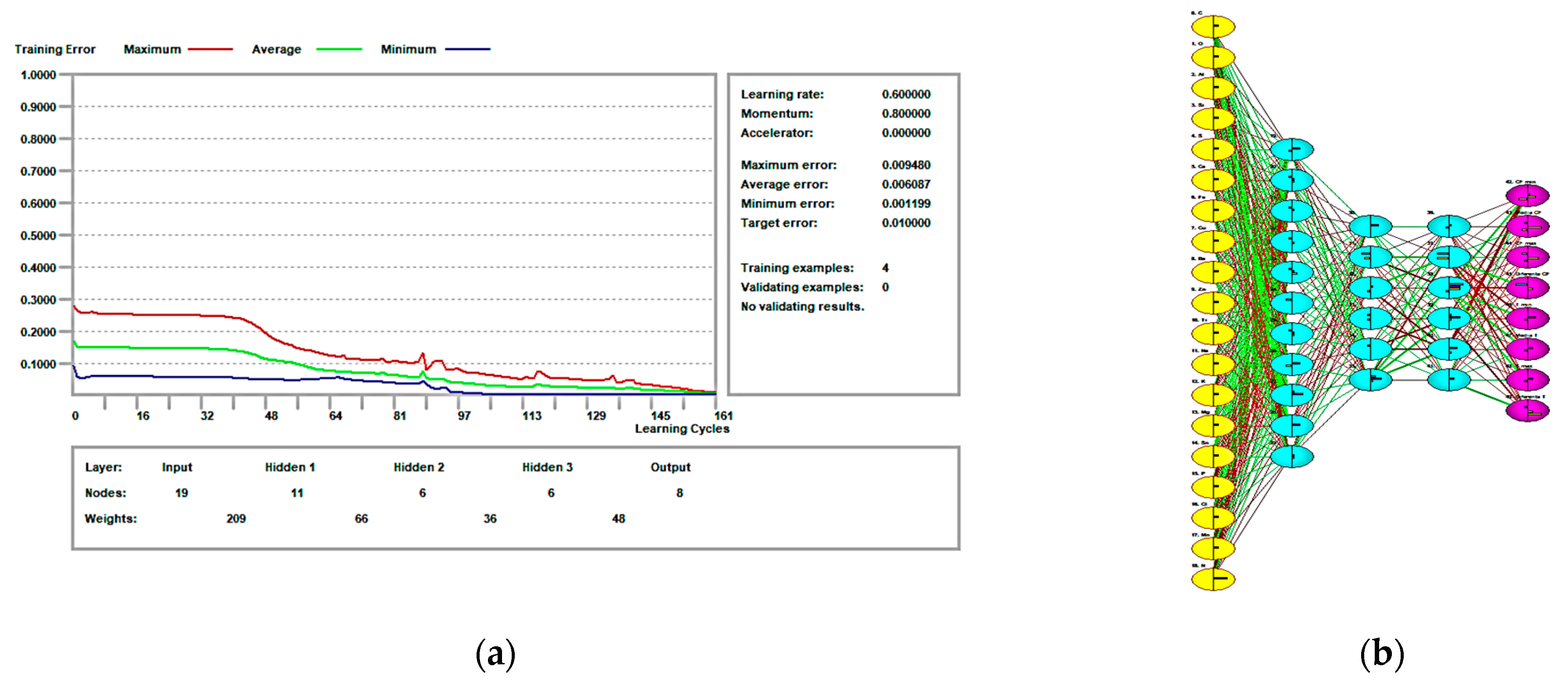

| Chemical Composition | First Material | Second Material |
|---|---|---|
| C | 54.37 | 42.40 |
| O | 26.96 | 27.14 |
| Al | 1.72 | 1.92 |
| Si | 6.33 | 6.26 |
| S | 1.10 | 2.05 |
| Ca | 3.40 | 5.01 |
| Fe | 3.66 | 4.38 |
| Cu | 1.06 | 4.05 |
| Ba | 0.55 | 1.58 |
| Zn | 0.17 | 2.44 |
| Ti | 0.05 | 0.12 |
| Na | 0.10 | 0.75 |
| K | 0.40 | 0.12 |
| Mg | 0.14 | - |
| Sn | - | 0.99 |
| P | - | 0.43 |
| Mn | - | 0.40 |
| Max COF values | - | 0.47 |
| Min temperature variation | 0.1 |
Disclaimer/Publisher’s Note: The statements, opinions and data contained in all publications are solely those of the individual author(s) and contributor(s) and not of MDPI and/or the editor(s). MDPI and/or the editor(s) disclaim responsibility for any injury to people or property resulting from any ideas, methods, instructions or products referred to in the content. |
© 2024 by the authors. Licensee MDPI, Basel, Switzerland. This article is an open access article distributed under the terms and conditions of the Creative Commons Attribution (CC BY) license (https://creativecommons.org/licenses/by/4.0/).
Share and Cite
Bălășoiu, G.; Munteniță, C.; Amortila, V.T.; Titire, L. Optimisation of Clutch Disc Friction Material Using a Multi-Layer Perceptron Artificial Neural Network. Polymers 2024, 16, 3588. https://doi.org/10.3390/polym16243588
Bălășoiu G, Munteniță C, Amortila VT, Titire L. Optimisation of Clutch Disc Friction Material Using a Multi-Layer Perceptron Artificial Neural Network. Polymers. 2024; 16(24):3588. https://doi.org/10.3390/polym16243588
Chicago/Turabian StyleBălășoiu, George, Cristian Munteniță, Valentin Tiberiu Amortila, and Larisa Titire. 2024. "Optimisation of Clutch Disc Friction Material Using a Multi-Layer Perceptron Artificial Neural Network" Polymers 16, no. 24: 3588. https://doi.org/10.3390/polym16243588
APA StyleBălășoiu, G., Munteniță, C., Amortila, V. T., & Titire, L. (2024). Optimisation of Clutch Disc Friction Material Using a Multi-Layer Perceptron Artificial Neural Network. Polymers, 16(24), 3588. https://doi.org/10.3390/polym16243588






